Best Swift Programming Books to Buy in November 2025

Mastering Swift 6: Modern programming techniques for high-performance apps in Swift 6.2


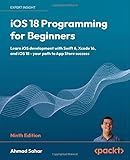
iOS 18 Programming for Beginners: Learn iOS development with Swift 6, Xcode 16, and iOS 18 - your path to App Store success


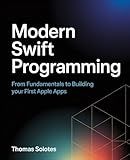
Modern Swift Programming: From Fundamentals to Building Your First Apple Apps



Swift Programming: The Big Nerd Ranch Guide


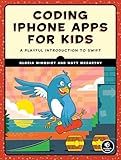
Coding iPhone Apps for Kids: A Playful Introduction to Swift


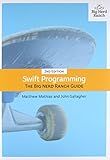
Swift Programming: The Big Nerd Ranch Guide (Big Nerd Ranch Guides)



Swift in Depth
- MASTER SWIFT WITH STEP-BY-STEP TUTORIALS AND PRACTICAL EXAMPLES.
- UNLOCK EXPERT TIPS TO BOOST YOUR APP DEVELOPMENT SKILLS.
- INCLUDES REAL-WORLD PROJECTS FOR HANDS-ON LEARNING EXPERIENCE.


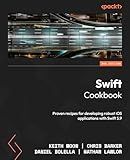
Swift Cookbook: Proven recipes for developing robust iOS applications with Swift 5.9


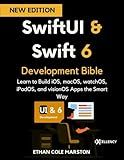
SwiftUI & Swift 6 Development Bible: Learn to Build iOS, macOS, watchOS, iPadOS, and visionOS Apps the Smart Way (Swift and iOS Mastery)


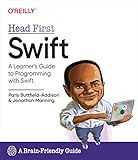
Head First Swift: A Learner's Guide to Programming with Swift


In Swift, loops are used to repeatedly execute a block of code until a specific condition is met. There are three types of loops available: for-in loops, while loops, and repeat-while loops.
- For-in Loops: For-in loops are used when you want to iterate over a sequence of elements. The loop declaration consists of the keyword 'for', followed by a constant or variable to represent each item in the sequence, the keyword 'in', and the sequence of items to be iterated. Example: let numbers = [1, 2, 3, 4, 5] for number in numbers { print(number) } This will loop through each element in the array 'numbers' and print its value.
- While Loops: While loops execute a block of code as long as a specific condition is true. The condition is checked before the execution of the loop block, and if it evaluates to false initially, the loop won't execute at all. Example: var counter = 0 while counter < 5 { print(counter) counter += 1 } This will print the values of 'counter' from 0 to 4.
- Repeat-While Loops: Repeat-while loops are similar to while loops, but the condition is checked after the execution of the loop block. It guarantees that the loop block is executed at least once. Example: var i = 0 repeat { print(i) i += 1 } while i < 5 This will also print the values of 'i' from 0 to 4, similar to the previous example.
Loops are powerful constructs in Swift that allow you to automate repetitive tasks and make your code more efficient and concise by avoiding unnecessary repetitions. Understanding how to work with loops can greatly enhance your ability to write efficient and readable code in Swift.
What is a loop in Swift programming?
A loop in Swift programming is a control structure that allows a set of instructions to be repeated multiple times until a certain condition is met or a certain number of iterations have been completed. It helps in performing repetitive tasks more efficiently and makes the code more readable. Swift programming language offers different types of loops such as for loop, while loop, and repeat-while loop.
How to create a for loop in Swift?
To create a for loop in Swift, you can use the for-in loop which allows you to iterate over a sequence of values. Here's the syntax:
for item in sequence { // code to be executed for each iteration }
In each iteration of the loop, the item will represent the current value from the sequence.
Here's an example to print the numbers from 1 to 5 using a for loop in Swift:
for number in 1...5 { print(number) }
Output:
1 2 3 4 5
You can also use a for loop to iterate over an array or a range of values. For example:
let names = ["Alice", "Bob", "Charlie"]
for name in names { print(name) }
Output:
Alice Bob Charlie
for number in 1..<10 { print(number) }
Output:
1 2 3 4 5 6 7 8 9
You can use the stride function to specify a step value in the range:
for number in stride(from: 10, through: 1, by: -2) { print(number) }
Output:
10 8 6 4 2
In this example, the loop starts from 10 and goes in steps of -2 until the value reaches 1.
What is the difference between a sequence and an array in Swift?
In Swift, a sequence and an array are both used to store a collection of values, but there are some differences between the two:
- Type: A sequence is a protocol or an interface, whereas an array is a specific type of collection.
- Order: Sequences represent a series of elements that can be traversed sequentially, but they don't guarantee a specific order. On the other hand, arrays maintain the order of elements and provide random access to retrieve elements.
- Mutability: Sequences can be mutable or immutable, depending on the specific type implementing the sequence protocol. Arrays are mutable by default, meaning you can modify their contents by adding, removing, or updating elements.
- Size: Sequences can be finite or infinite. For example, a range or a generated sequence can be infinite. Arrays are finite in size and have a fixed length.
- Conformances: Many types in Swift automatically conform to the Sequence protocol, which means they can be used as a sequence. Arrays are one such type that conforms to the sequence protocol.
In summary, an array is a specific type of collection that provides ordered and mutable storage of elements, whereas a sequence is a more general term for any type that provides a series of elements that can be iterated through. Arrays can be considered as a concrete implementation of sequences.
How to use loops in Swift?
In Swift, there are several types of loops that you can use to repeat a block of code. Here are the main loop structures you can use:
- For Loop: The for-in loop is used to iterate over a sequence, such as an array, a range of numbers, or a string. Syntax: for item in sequence { // code to be executed for each item }
- While Loop: The while loop repeats a block of code as long as a condition is true. Syntax: while condition { // code to be executed while condition is true }
- Repeat-While Loop: The repeat-while loop is similar to the while loop, but it guarantees that the code block is executed at least once. Syntax: repeat { // code to be executed at least once } while condition
- Iterating over a Dictionary: To iterate over a dictionary, you can use the for-in loop with a key-value pair. Syntax: for (key, value) in dictionary { // code to be executed for each key-value pair }
Note: In all loop structures, you can use control statements like break to exit the loop prematurely or continue to skip to the next iteration.
Here's an example that demonstrates the usage of loops in Swift:
let numbers = [1, 2, 3, 4, 5]
// For loop for number in numbers { print(number) }
// While loop var index = 0 while index < numbers.count { print(numbers[index]) index += 1 }
// Repeat-while loop var i = 0 repeat { print(numbers[i]) i += 1 } while i < numbers.count
// Iterating over a dictionary let scores = ["Alice": 95, "Bob": 80, "Charlie": 70] for (name, score) in scores { print("\(name) scored \(score)") }
This code will print the numbers in the array, followed by the key-value pairs of the dictionary.
What is a control transfer statement in Swift loops?
In Swift loops, a control transfer statement is used to change the flow of execution within the loop. It allows you to exit the loop prematurely or continue to the next iteration based on certain conditions.
Some common control transfer statements used in Swift loops are:
- break: It terminates the entire loop and transfers control to the next statement after the loop.
- continue: It skips the remaining code within the current iteration and continues to the next iteration of the loop.
- fallthrough: It is used only in switch statements and causes the execution to fall through to the next case statement, ignoring the usual switch behavior.
Here's an example to illustrate the use of control transfer statements in a Swift loop:
for number in 1...10 { if number % 2 == 0 { continue // Skip even numbers }
if number == 7 {
break // Exit the loop when number is 7
}
print(number)
}
In this example, the loop prints numbers from 1 to 10, but it skips even numbers using the continue statement. Additionally, it terminates the loop when the number is 7 using the break statement.
What is the syntax for a while loop in Swift?
The syntax for a while loop in Swift is as follows:
while condition { // code to be executed repeatedly as long as the condition is true }
The condition is a Boolean expression that is evaluated before each iteration. If the condition is true, the code inside the while loop will be executed. This process continues until the condition becomes false.
